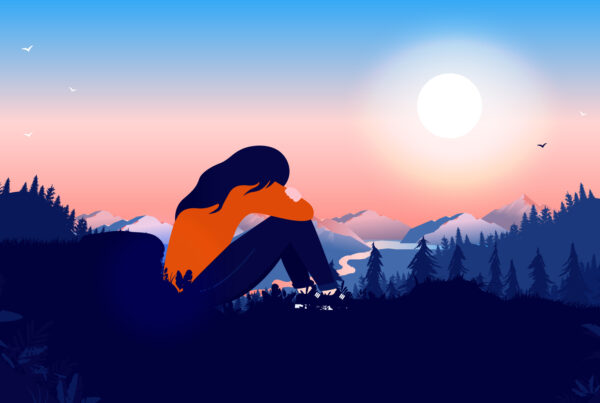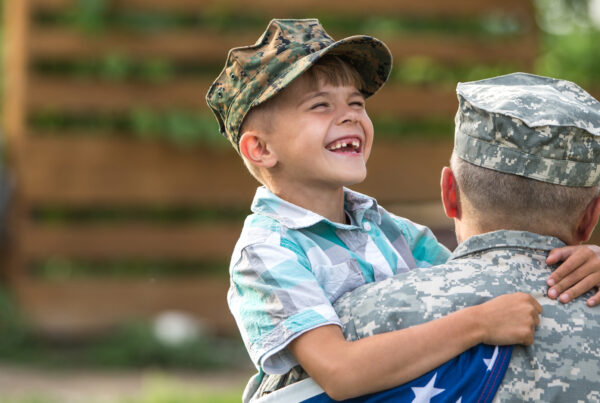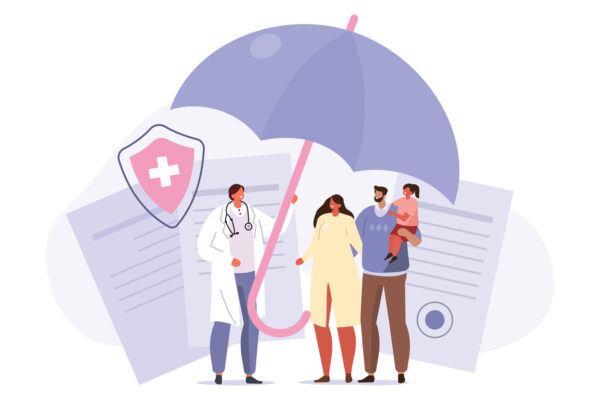COVID changed everything in our lives, from how we greet each other to how we blow out candles on a birthday cake. Undoubtedly this has been an interesting two years, a time where everyone needed to adapt, change, and pivot as a result of the pandemic. I often think about a line from a Talking Heads song that puts it all into perspective.
And you may find yourself living in a shotgun shack
And you may find yourself in another part of the world
And you may find yourself behind the wheel of a large automobile
And you may find yourself in a beautiful house, with a beautiful wife
And you may ask yourself, “Well, how did I get here?”
Say what you want about the American rock band that lasted from the 70s to the early 90s, but that one line “Well, how did I get here?” kind of sums up my experience with COVID. Billions of people around the world experienced severe economic distress. Businesses and schools shifted to new delivery platforms. Prevalence rates of anxiety and depression skyrocketed. Social distancing, isolation, changing regulations, masks, shots….
And yet, amid all that uncertainty, I can’t help but think about the beautiful and encouraging resiliency displayed by family, friends, and associates. To understand the power of resiliency, though, we first have to shine a spotlight on stress, anxiety, and uncertainty. As we are all aware, the world is not a still photograph – it is a motion picture.
Stressed and anxious in an uncertain world
The line between stress and anxiety often gets blurred. Both speed up the heart, trigger rapid breathing and cause muscle tension. The difference is that stress is caused by an existing factor and anxiety is stress that continues after that stressor is gone. In other words, stress is a response to a threat in a situation and anxiety is a reaction to the stress.
Uncertainty, meanwhile, refers to situations involving imperfect or unknown information. Whether it is in relation to climate change, disease outbreaks, financial instability, or natural disasters, every media headline seems to assert that things are uncertain. Uncertainty defines our times and as humans we are naturally curious. We seek to understand, predict, and control; this helps us learn and keeps us safe. Not knowing is an uncomfortable experience and uncertainty can feel dangerous because we cannot predict with complete confidence what will happen. Uncertainty feeds our stress and anxiety, and how you react affects your mental well-being.
Roger Crawford, motivational speaker and former tennis player, sums everything up for me with this passage about change: “Change is inevitable; therefore opportunity is possible. Take advantage of the opportunity that change brings. Look at the change you are facing as an opportunity instead of a risk. Uncertainties generate challenges, but they also represent an opportunity.”
Resilience = Control
We like to live our lives in our comfort zone and our subconscious likes this because it is the “known.” Embracing change is about stepping into the “unknown;” our subconscious doesn’t like the unknown, so it will resist. There is no escaping the fact that change is a disruptor and it feels uncomfortable and scary. However, it is our power of choice that enables us to activate positive change in our lives. We cannot control some events in our life, but we can control how we allow those events to influence our lives.
This brings me to power or resiliency and the impact it has had on my life and many others. Resiliency is the ability to respond, absorb, and adapt. It is not simply about bouncing back from adversity – it’s about dealing with disruptive forces while adapting to changing circumstances, eventually leading to the experience of thriving. When stress, adversity or trauma strikes, you still experience anger, grief and pain, but you’re able to keep functioning both physically and psychologically.
What makes us resilient is a complex mix of genetics, psychology, social and cultural influences, as well as our spiritual strength and our mindfulness. Some seem to be born more resilient than others, but resiliency can be learned and that is empowering. Thus, stress, anxiety, and uncertainty can present an unparalleled opportunity to learn and grow.
A Foundation of Mindfulness
Many books and theories talk about ways to build resilience and steps needed to utilize this hidden power within us all. For me the best way I’ve found to become resilient is to practice mindfulness.
Mindfulness is the basic human ability of being fully present in the moment; being aware of the situation and what you are doing. This is NOT simply relaxing. Mindfulness requires an active component of awareness that asks us to question our thoughts and emotions. It gives us the ability to pause and observe. Within that pause, there’s space for new perspectives which can break our habitual reactivity to stress, anxiety, and uncertainty.
When we shift from obsessing about a problem to assessing our response to the problem, then we can open ourselves up to possibilities and solutions. For some this is a significant change to how you see and engage with the world, but with practice it will afford the opportunity to regain a sense of balance and become open to possibilities.
How many of you have waited in line at your local coffee shop for what seems like an eternity while getting annoyed and frustrated? This happens to us all, but next time challenge yourself to use this time to sit in stillness, monitor all around you and open up your senses.
- Look around and explore the different colors, the artwork, the people.
- Listen to the frothing of the milk and the cups clinking.
- Smell all of the incredible aromas.
In every moment of waiting lies an opportunity to notice your surrounding with all of your senses.
Taking a mindful walk or hike is another great way to practice mindfulness and build resiliency. Mindfulness is about brining your attention to the present moment. When taking a mindful walk or hike, the emphasis is about becoming aware of your surrounding and how your body and mind feel while moving. To practice, pick a trail and focus on immersing your senses into the experience.
- Walk for 5 to 10 minutes and pause to tune into the sounds.
- Walk another 5 to 10 minutes and pause, this time focus on feeling the air hit your face or the sun warming your skin.
- Another 5 to 10 minutes you pause and open up your sense of smell; taking in the flowers, trees, grass… Repeat and now pause to only focus on the colors you see all around you.
- Finally, bring all of your senses together and finish the walk as one with nature.
Conclusion
The one constant thing in our lives is change and you can’t avoid unexpected events; that’s why they are called unexpected! However, if you ignore the challenge of change, you will be denied the opportunity to learn and grow.
Resilience and mindfulness won’t make your problems go away, but they can give you the ability to see past them, find enjoyment in life and better handle stress. Resilience and mindfulness are about cultivating a sense of calm, clarity and stability, even when things are stressful and overwhelming. The goal isn’t to eliminate stress, worry, or anxiety, but to manage it.






